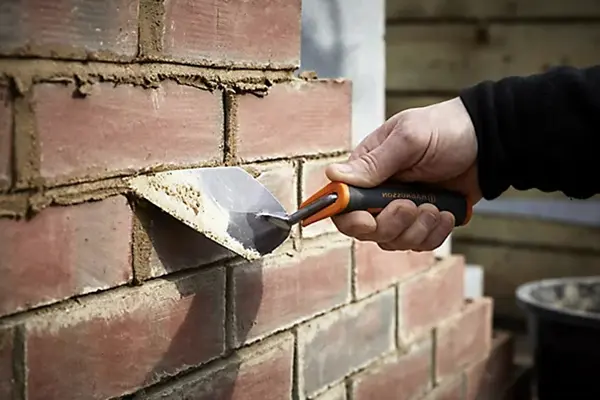Pointing is a crucial aspect of masonry work, involving the filling and finishing mortar joints between bricks or stones. The tool of choice for this task is the pointing trowel, specifically designed to provide precision and efficiency. This article explores the features and benefits of pointing trowels, the types available, and how to choose the right one for your project.
The Role of a Pointing Trowel
Definition and Purpose
A pointing trowel is a small, handheld tool with a flat, pointed blade, used primarily for applying and shaping mortar in masonry joints. Its design allows for precision in tight spaces, ensuring a neat and smooth finish. The blade is typically made of hardened steel, providing durability and resistance to wear and tear.
Features of a Pointing Trowel
- Blade Shape and Size: The blade of a pointing trowel is usually triangular or diamond-shaped, tapering to a sharp point. This shape facilitates easy access to narrow joints and detailed work.
- Blade Length: Pointing trowels come in various lengths, typically 4 to 7 inches. The size of the blade you choose depends on the width of the mortar joints and the specific requirements of your project.
- Handle: The handle is ergonomically designed for comfort and control, often made from wood, plastic, or rubber. A good grip is essential for precise and efficient pointing work.
Types of Pointing Trowels
Standard Pointing Trowels
These are the most common type, featuring a basic triangular blade ideal for general pointing tasks. They are versatile and suitable for most masonry projects.
Bucket Trowels
Bucket trowels have a wider blade and are designed for scooping mortar from buckets. While not exclusively for pointing, they can be useful for transferring mortar before fine-tuning with a standard pointing trowel.
Tuck Pointing Trowels
These trowels have a narrower blade, perfect for tuckpointing, which involves removing old mortar and replacing it with new mortar to maintain the integrity of brickwork. The narrow blade fits into the small joints of older masonry.
Choosing the Right-Pointing Trowel
Consider the Project Scope
- Joint Width: For wider joints, a larger trowel blade can be more efficient. Conversely, narrow joints require a smaller, more precise blade.
- Material and Durability: A high-quality steel blade ensures longevity and resistance to bending or breaking, especially important for professional masons.
Handle Comfort and Grip
A comfortable handle is crucial for prolonged use. Look for trowels with ergonomic designs that reduce hand fatigue. Rubber or soft-grip handles can enhance comfort and control.
Brand and Quality
Reputable brands often offer higher quality tools that last longer and perform better. Investing in a good pointing trowel can save time and effort in the long run.
Using a Pointing Trowel Effectively
- Preparation: Ensure the surface is clean and free from debris. Wet the bricks or stones slightly to improve mortar adhesion.
- Application: Load the trowel with a small amount of mortar. Press it firmly into the joint, using the edge of the blade to smooth and compact the mortar.
- Finishing: Use the trowel’s point to create a neat finish. For concave joints, you might need a jointer tool in conjunction with the pointing trowel.
Conclusion
A pointing trowel is an indispensable tool for any masonry project involving the filling and finishing of mortar joints. Its design allows for precision and ease of use, making it the best tool for the job. When choosing a pointing trowel, consider the size of the joints, the comfort of the handle, and the quality of the blade. With the right-pointing trowel, you can achieve a professional finish that enhances both the appearance and durability of your masonry work.
Whether you’re a professional mason or a DIY enthusiast, investing in a high-quality pointing trowel will ensure your pointing tasks are completed efficiently and effectively.
Post time: Jul-31-2024







